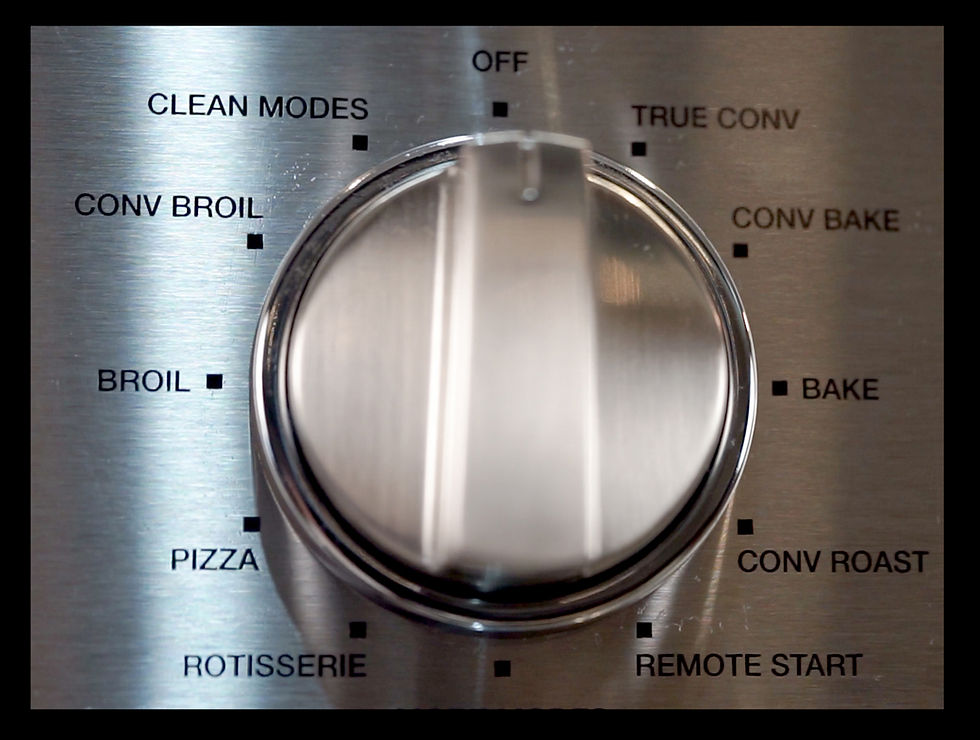As I have explained in my previous post, there are many benefits to cooking with Convection, the challenge especially if your oven has multiple cooking modes is to choose the mode most suited to the type of food you are cooking. In this video series, I will cover the Convection Modes most often found in electric ovens.

Once you review this information you will understand why recipe writers pretty much leave it up to the reader to deal with the choice of cooking modes and temperature adjustments, but I sincerely hope this information will help make that choice much easier.
Now convection gas ovens are different so there will be a separate video for those; however, the same Convection principles apply when cooking in a Gas Convection oven.
- Gas oven modes control knob -
Where Does the heat come from in the Convection Mode?
If your oven has a mode that simply says Convection or True Convection, the important thing to know is that in this mode only the heating elements around the fan are active. There is no additional heat from the top or bottom heating elements.

When the heat is only coming from the rear Convection element you can bake on multiple racks at one time and all the food will cook evenly because the fan is circulating the heat around the oven cooking the food from the edge to the core. There is no heat being directed at the food from either the top or bottom heating elements.
To review, the benefits of cooking in a Convection mode are:
Foods have more moisture retention
Large cuts of meat cook much faster and require no turning or basting
Multiple foods can be cooked at one time with no transfer of flavor.
When do I use the Convection Mode and What type of pans should I use?
The Convection mode is most often used for baking multiple racks of cookies, appetizers, or pastries and can also be used to cook an entire meal in the oven on multiple racks, or to roast a large cut of lean tender meat.

When baking in the Convection mode, the type of pan used can also make a difference. For best results use flat cookie sheets with a lip or shallow-sided pans. This allows the Convection heat to evenly cook the food.
When using a glass dish always reduce the temperature by 30°F. Otherwise, as a general rule, reduce the temperature by 25°F when baking in Convection. When roasting or cooking several casserole style dishes at one time use the recipe temperature. Since standard ovens are so large nowadays you may actually need to increase the oven temperature by 5 degrees when cooking large quantities of food in this mode. Pay attention to how your oven cooks and the results will be amazing.
Stay Tuned for my next post that will provide a detailed explanation of the Convection Bake Mode.
In the meantime, visit my Convection Recipe page for recipe ideas or your next meal. Once you land at this page click on the Convection Meal category. These recipes will show you how to cook complete meals with a single convection oven.
Larissa, your convection enthusiast.
コメント